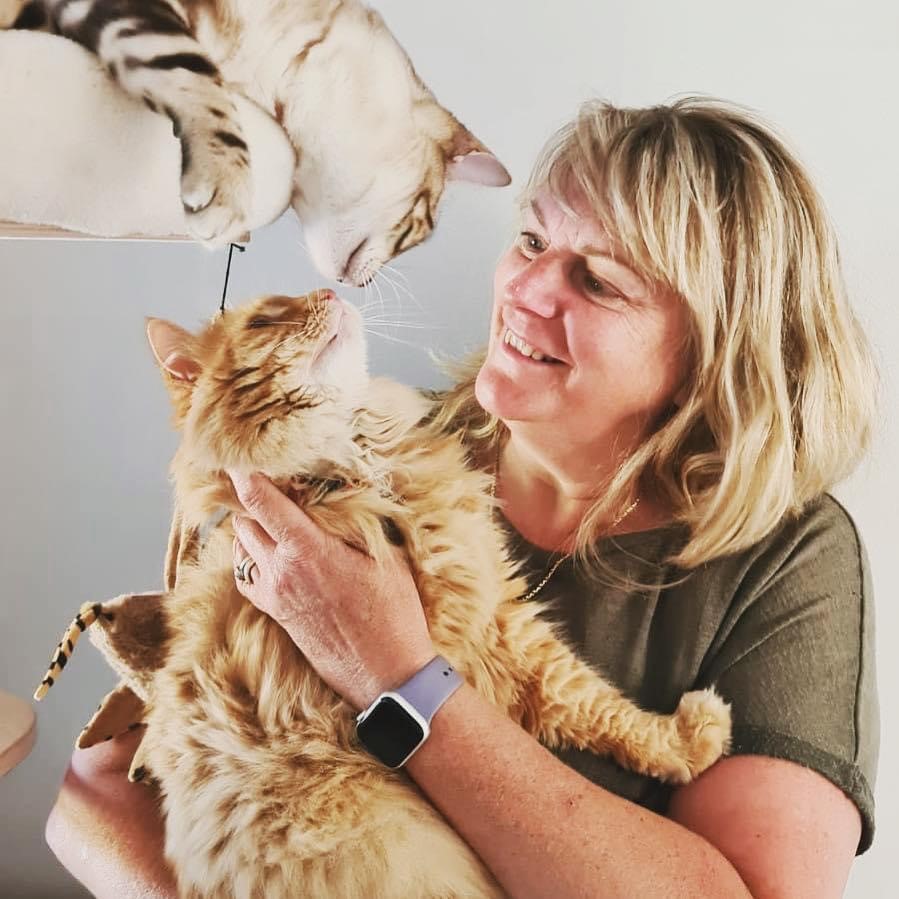Understanding and Managing Separation Anxiety in Cats: A Guide for Pet Parents
Separation anxiety is a well-known issue in dogs but is often misunderstood or overlooked in cats. As a clinical feline behaviourist, I have seen firsthand how distressing this condition can be for cats and their caregivers. Cats, known for their independence, are still creatures of habit and attachment. When their routines are disrupted or when they are left alone for extended periods, some cats may experience anxiety that manifests in various behavioural or physical symptoms.
In this article, we will explore the causes of separation anxiety in cats, identify signs that your feline friend may be suffering, and provide practical strategies for managing and alleviating their stress in the home. One key strategy involves the use of synthetic pheromones, such as those offered by Comfort Zone, to create a calming environment for your cat when you’re not at home.
What is Separation Anxiety in Cats?
Separation anxiety in cats occurs when a cat becomes overly attached or dependent on its preferred human and experiences significant stress when left alone. Unlike dogs, who might express their distress through barking or destructive behaviour, cats may show their anxiety in more subtle ways, which can make it harder for pet parents to recognise.
Causes of Separation Anxiety in Cats
Understanding the root causes of separation anxiety is crucial for effectively managing it. Several factors can contribute to the development of this condition in cats:
1. Early Weaning: Cats that were separated from their mothers and littermates too early may be more prone to separation anxiety. The early loss of their primary source of comfort and security can lead to long-term behavioural issues.
2. Changes in Routine: Cats thrive on routine, and any significant change, such as a new job that requires you to be out of the house for longer hours, can trigger anxiety. Even small changes, like altering feeding times, can be distressing for some cats.
3. Previous Trauma: Cats that have experienced traumatic events, such as being abandoned, rehomed, or losing a beloved companion (whether human or animal), may develop separation anxiety. These experiences can leave lasting emotional triggers.
4. Lack of Mental Stimulation: Cats need mental and physical stimulation to stay happy and healthy. A lack of enrichment, particularly when left alone, can lead to boredom and anxiety.
5. Single-cat Households: Cats in single-cat households may be more likely to develop separation anxiety as they don’t have the social interaction that a multi-cat household can provide. The absence of a companion can make them more reliant on their human for social interaction and comfort.
Signs of Separation Anxiety in Cats
Recognising the signs of separation anxiety in cats is the first step in addressing the problem. While each cat is different, some common indicators include:
- Excessive Vocalisation: Cats with separation anxiety may meow, yowl, or cry excessively when they anticipate being left alone or when they are alone.
- Inappropriate Elimination: One of the more distressing symptoms for pet parents is when a cat begins urinating or defecating outside the litter box. This behaviour can be a response to the stress and anxiety they feel.
- Destructive Behaviour: Scratching furniture or other objects, chewing on items, or knocking things over may be signs that your cat is feeling anxious.
- Over-grooming: Some cats may excessively groom themselves, leading to bald spots or skin irritation. This is a self-soothing behaviour that cats may engage in when they are stressed.
- Clinginess or Hiding: Cats with separation anxiety may become overly clingy when you are home, following you from room to room. Conversely, they may hide when you’re about to leave, signalling their distress..
Strategies to Manage Separation Anxiety in Cats
Once you’ve identified that your cat is suffering from separation anxiety, it’s important to implement strategies that can help them cope. These strategies can help reduce their stress and improve their overall well-being.
1. Create a Calming Environment
The environment your cat is left in while you’re away can significantly impact their stress levels. Making small adjustments to create a more soothing atmosphere can go a long way in helping your cat feel more comfortable.
- Comfort Zone Plug-In Device: Using a Comfort Zone Plug-In Device can be particularly effective in creating a calm environment. This device emits synthetic pheromones that mimic the natural facial pheromones cats use to mark their territory as safe and secure. By filling your home with these pheromones, you can help your cat feel more relaxed even when you’re not there.
- Comfort Items: Leave out items that carry your scent, such as a worn t-shirt or blanket. The familiar smell can be comforting to your cat in your absence.
- Soothing Music: Playing soft, classical music or specially designed cat music can help reduce anxiety. The gentle sounds can mask outside noises that might otherwise trigger anxiety in your cat. Some smart speakers even have a skill just for leaving pets alone. (check out Pet Buddy)
2. Provide Mental and Physical Stimulation
Keeping your cat mentally and physically engaged can reduce the likelihood of them experiencing anxiety when you’re away.
- Interactive Toys: Provide your cat with a variety of toys that stimulate their mind and body. Puzzle feeders, balls, and interactive toys that mimic the movement of prey can keep your cat entertained. Foragers for their food instead of the traditional bowl can tap into this innate predatory function.
- Robust Tall Scratching Posts and Cat Trees: Ensure your cat has plenty of opportunities to scratch and climb. This not only helps them expend energy but also allows them to engage in natural behaviours that can reduce stress.
- Window Perches: Cats love to observe the outside world. Setting up a perch near a window where your cat can watch birds, cars, and other activities can provide hours of entertainment. In addition, high perches make them feel secure so investing in a cat wall or similar structure will help alleviate the stress.
3. Establish a Routine
Cats are creatures of habit, and maintaining a consistent routine can help alleviate their anxiety.
- Set Regular Times for Feeding and Play: Try to feed and play with your cat at the same times each day, ideally play before food is offered as this completes the innate predatory hunting drive. This predictability can help your cat feel more secure, as they know what to expect and when.
- Practice Leaving and Returning Home: Start by leaving the house for short periods, gradually increasing the time you’re away. This can help your cat become accustomed to your absence and learn that you always return.
4. Consider Adding a Companion
If your cat is the only pet in the household and struggles with separation anxiety, you might consider adopting another cat. However, this should be done with careful consideration, as introducing a new pet can also cause stress. It’s important to ensure that both cats are introduced gradually and that they have compatible personalities.
5. Consult with a Veterinarian or Behaviourist
If your cat’s separation anxiety is severe, it may be necessary to consult with a veterinarian or a feline behaviourist. They can provide additional insights and may recommend further interventions, such as anti-anxiety medication or behaviour modification therapy.
The Role of Comfort Zone Products in Managing Separation Anxiety
Comfort Zone’s range of products, particularly the Comfort Zone Plug-In Device, can be a valuable tool in your strategy to manage your cat’s separation anxiety. By consistently using these products, you can help create an environment that feels safe and secure for your cat, reducing their stress levels and improving their overall quality of life.
The Comfort Zone Plug-In Device is easy to use—simply plug it into an outlet in a room where your cat spends most of their time, ideally at cat nose height. The device will start releasing synthetic pheromones that can help to calm your cat and reduce the likelihood of stress-related behaviours. It’s a simple, yet effective way to support your cat’s emotional wellbeing, particularly during times of change or when you’re not at home.
Conclusion
Separation anxiety in cats is a challenging but manageable condition. By understanding the causes and recognising the signs, you can take steps to alleviate your cat’s anxiety and improve their quality of life. Whether it’s through environmental enrichment, establishing a routine, or using Comfort Zone products, there are many ways to help your cat feel safe, secure, and content even when you’re not at home.
With patience, consistency, and the right tools, you can support your cat through their anxiety, ensuring that they remain a happy and healthy member of your family.

Amanda Campion
Clinical Feline Behaviourist CAB APBC ABTC

